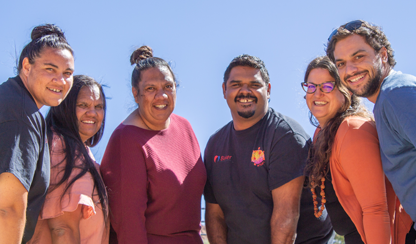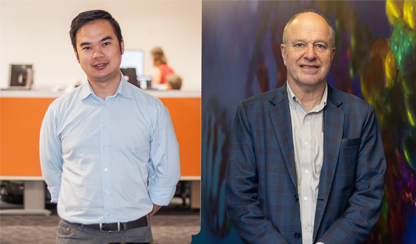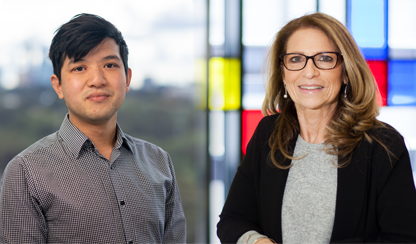17 November 2022
Institute news

Paula Wines has worked as a nurse in remote communities across the country over many years. Since joining us, she’s led our HTLV-1 Research team in Central Australia. Participation in the research project is exceeding expectations, and Paula thinks she knows why. Find out more as we go Fast Five with Paula.
You’ve recently joined the Baker Institute in Central Australia, tell us about your background?
I’m originally from a coastal Victorian town, Anglesea, so quite a different environment to the one I’m currently working in. I’ve worked as an ICU nurse in Australia and the UK but I have spent quite a lot of my working life in remote communities across the Northern Territory, Western Australia and Queensland. I’ve also worked in international aid in South Sudan.
I’ve been in the NT for nine years, initially coordinating the NT Trachoma Program in the Centre for Disease Control (CDC), and then I spent the two years before my appointment with the Baker Institute in a management role in Remote Primary Health Care.
What attracted you to the Institute and what does your role involve?
I have a strong interest in public health. Having worked in CDC for six years, I am acutely aware of HTLV-1 and the limited knowledge and clinical guidelines around it, as well as the need to learn more about the specifics associated with the Central Australian Aboriginal population.
Your team is growing. Can you tell us who is in the team and what they do?
We have a wonderful HTLV-1 team with a great mix of skill sets that make our team particularly good at what it does. I’m the Research Nurse Coordinator and our team is made up of Yasmin Watts, Margaret Smith, Amy Lankin, Dion Tilmouth, Jordan White and Timicka Pon. Yasmin’s expertise is in engagement with the communities and service providers, and Margaret is one of the team leaders who is also great at community engagement. Amy and Timicka have great IT skills so they’re able to collate the results and make sure everything is lodged and recorded and are good at data cleaning. Timicka has also been trained to draw blood. Jordan is the newest member of our team and our REDCap guru and Dion is a great communicator who can also help with drawing blood. We’re a really dynamic team whose skills are complementary, which is why we’re far exceeding our own expectations when it comes to signing up participants. We expected to sign up 25 per cent of those we engage with into our HTLV-1 study, but we’re actually recruiting closer to 50 per cent.
Your logistical challenges at work may be a little different to many of ours, what sorts of things do you face that we might be surprised about?
At the end of our last trip to a remote community to recruit participants to the study, we were caught in a hailstorm. We could see dark clouds in the distance so we started to pack up the equipment, which includes shade tents, tables and chairs, BBQ etc. We’d packed up all the equipment apart from the centrifuge, which still had around five minutes left on the cycle. While we were packing, we hadn’t looked at the weather closing in on us until the wind hit. Swirls of wind were followed by the quintessential huge rain drops associated with a desert storm. Luckily, we were under cover. With three minutes left on the centrifuge, the rain turned to hail. Unfortunately, the shelter gave us little protection as the wind was blowing the rain and hail under the shelter. Two minutes left on the centrifuge and we were all huddled around the machine protecting it from getting wet. We were human weather shields. I think the storm passed about two minutes after the centrifuge finished as we scrambled into the vehicles sopping wet.
When you’re not at work, what do you enjoy doing?
In my spare time, I love gardening, reading and sports including soccer, netball and swimming.





